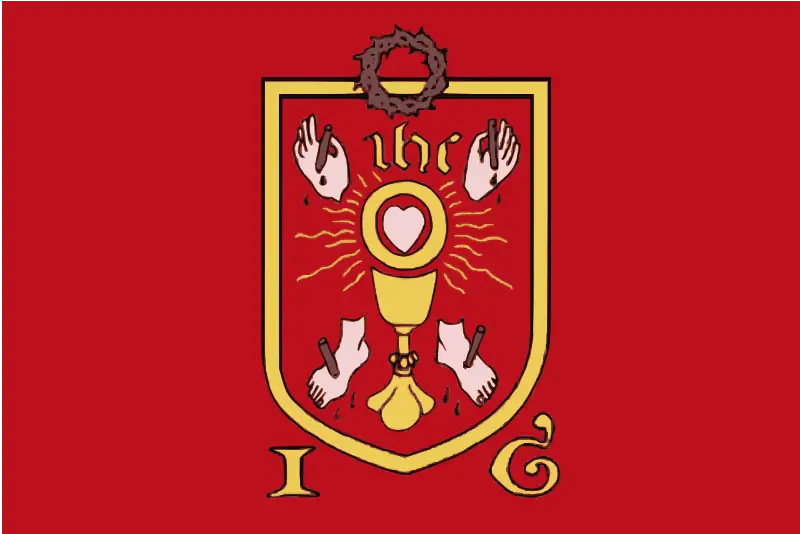 On 10th October 1562, twenty-nine-year-old Queen Elizabeth I was taken ill at Hampton Court Palace. It was thought that the queen had caught a bad cold but when she developed a violent fever it became clear that it was something more serious; Elizabeth had smallpox.
On 10th October 1562, twenty-nine-year-old Queen Elizabeth I was taken ill at Hampton Court Palace. It was thought that the queen had caught a bad cold but when she developed a violent fever it became clear that it was something more serious; Elizabeth had smallpox.
Bishop Quadra wrote to the Duchess of Parma six days later:
"The Queen has been ill of fever at Kingston, and the malady has now turned to small-pox. The eruption cannot come out and she is in great danger. Cecil was hastily summoned from London at midnight. If the Queen die it will be very soon, within a few days at latest, and now all the talk is who is to be her successor. Lord Robert has a large armed force under his control, and will probably pronounce for his brother-in-law, the earl of Huntingdon.—London, 16th October 1562."
Obviously, Elizabeth didn't die, and she was lucky that her scarring was minimal, but Robert Dudley's sister, Lady Mary Sidney, who nursed her good friend the queen through her illness, caught smallpox and became badly disfigured.
Here is my Claire Chats video on the topic:
Notes and Sources
- History of Smallpox, CDC.
- Smallpox: inoculation and vaccination, Science Museum.
- Edward Jenner and the history of smallpox and vaccination, Stefan Riedel.
- McCabe, Stuart (2016) Queen Margaret Tudor: The Story of a Courageous but Forgotten Monarch, Mereo Books.
- Henderson, D.A. (2009) Smallpox: The Death of a Disease, Prometheus Books.
- O'Caellaigh, Seamus (2017) Pustules, Pestilence and Pain, Draft manuscript, MadeGlobal Publishing.
- Hopkins, Donald R. (2002) The Greatest Killer: Smallpox in History, University of Chicago Press.
- Kotar, S.L. and Gessler, J.E. (2013) Smallpox: A History, McFarland.
- ed. Kaulek, Jean Baptiste Louis (1885) Correspondance politique de mm. de Castillon et de Marillac, ambassadeurs de France en Angleterre (1537-1542); pub. sous les auspices de la Commission des archives diplomatiques
- 'Henry VIII: March 1514, 1-10', in Letters and Papers, Foreign and Domestic, Henry VIII, Volume 1, 1509-1514, ed. J S Brewer (London, 1920), pp. 1179-1188. British History Online http://www.british-history.ac.uk/letters-papers-hen8/vol1/pp1179-1188
- Creighton, Charles (1891) A History of Epidemics in Britain: From A.D. 664 to the great plague, Volume 1, Cambridge University Press.
- 'Simancas: October 1562', in Calendar of State Papers, Spain (Simancas), Volume 1, 1558-1567, ed. Martin A S Hume (London, 1892), pp. 261-265. British History Online http://www.british-history.ac.uk/cal-state-papers/simancas/vol1/pp261-265
- ed. Brady, Ciaran (2002) A Viceroy’s Vindication? Sir Henry Sidney’s Memoir of Service in Ireland, 1556-78, Cork University Press.
- Tucker, Jonathan B. (2002) Scourge: The Once and Future Threat of Smallpox, Grove Press.
- Strickland, Agnes (1843) Lives of the Queens of England, Volume VI, Henry Colburn.



When Jenner took the blood serum from a milk maid with cow pox and gave it to a ten year old boy with small pox, he took a great risk. Imagine if he had have died. Those early pioneers unknowingly did what we now know is the best way to inoculate against disease, form a serum from the cells of a survivor. We use small amounts of viral cells to identify strains of the flu virus and form an inoculation against it. The jabs we have as babies contain microscopic fragments of the bacteria or virus they are designed to defend against. Even more beneficial is if we survive the disease, we are immune to them. Our genetic code carries markers from our ancestors who developed specific antibodies and cells to survive and pass on the new stronger healing genes helping us to live through serious disease naturally and then form inoculation to eradicate them. We may have eradicated small pox but we are in serious danger of causing more harm and new super bugs have been born because of our over dependence on antibiotics. Antibiotics are meant for serious illness, they are useful for long term infections that won’t clear up themselves. They are not meant for kids with soar throats. A cold is a virus and yet parents think it can be treated with antibiotics instead of being allowed to run its course. This is how we are no longer immune to many antibiotic resistant diseases. E Coli is one of the most dangerous bacterial culture out there, a Superbug made by our over use of antibiotics. We need to be careful. Antibiotics save lives, they heal and save lives, literally, but if we use them for everything we are going to destroy our own immune systems. Our ancestors natural survival will have been for nothing.
Elizabeth I was lucky but also the product of strong genes. Her mother, Anne Boleyn lived through another killer, the Sweat, as did her brother and Uncle. Her father survived malaria, small pox and tertiary fever. Her brother lived through all three but was killed by TB or something similar when his immune system collapsed. Elizabeth had the markers of their genetic immunity.
The fact that Elizabeth was so ill for a number days, of course, as your video points out, meant that the Government was in a panic. Elizabeth was 29, unmarried and without an heir. She was also politically controversial because her enemies and many of her own subjects believed that she was illegitimate and due to her Protestant Faith, that she was a heretic. Elizabeth may have been broadly popular but some sections of society, not to mention the Spanish and leading Catholic powers would have preferred an alternative on the throne. The number of people mentioned in the letters to the Duchess of Parma indicated the difficulty the country would have been in had Elizabeth died.
One popular candidate not mentioned, but probably the legal heir to the throne was Catherine Grey, sister to the late Queen Jane Grey, executed for treason. Many regarded her as Elizabeth ‘s successor if anything happened and she now made a decision, which given the Queen’s_brush with death, looked like potential treason. Catherine married another Royal cousin, Edward Seymour without consent and was pregnant with his son. The couple were put in the Tower, separated, but somehow after the birth of one son, managed to conceive another one. Elizabeth released her cousin but the couple were housed apart and not allowed to visit. She never forgave them. Catherine Grey died young as a result of her ill treatment by the Queen. However, we also have to see this in the light of Elizabeth almost dying without an heir and her authority being challenged. Another Grey challenge to the Tudor crown was something she wanted to avoid. It is said that on hearing her male first cousin Henry Huntington could take over if she died during her small pox illness that she recovered speedily, which is probably hearsay, but given the determination of Elizabeth to be her own person and not let anything get in her way of Sovereignty, it may have a ring of truth.
Jenner gets all the credit for the Smallpox vaccine. But I urge people to read Lady Wortley Montague the real pioneer (via the Turks) in bringing a remedy to England.